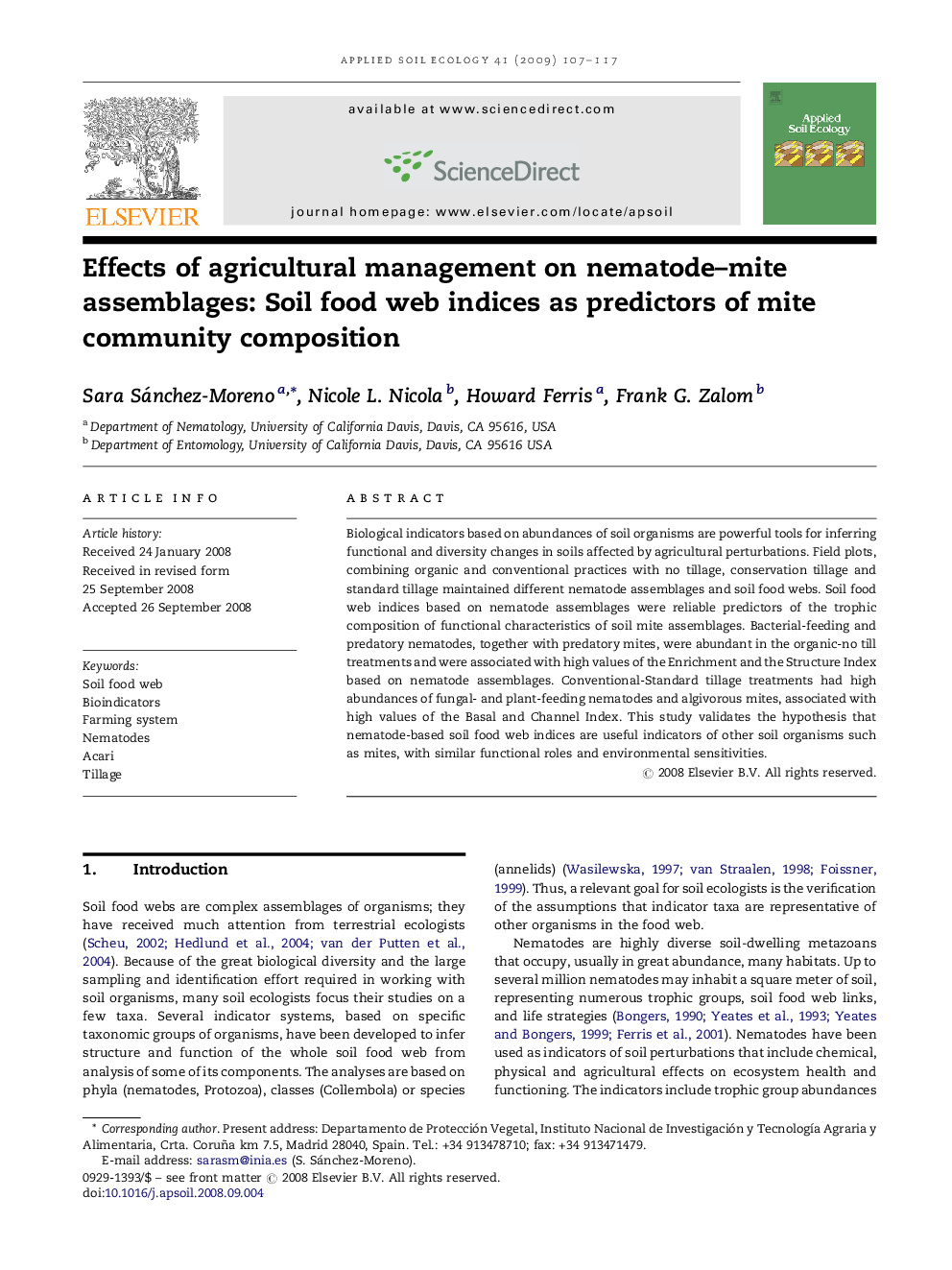| Article ID | Journal | Published Year | Pages | File Type |
|---|---|---|---|---|
| 4383101 | Applied Soil Ecology | 2009 | 11 Pages |
Abstract
Biological indicators based on abundances of soil organisms are powerful tools for inferring functional and diversity changes in soils affected by agricultural perturbations. Field plots, combining organic and conventional practices with no tillage, conservation tillage and standard tillage maintained different nematode assemblages and soil food webs. Soil food web indices based on nematode assemblages were reliable predictors of the trophic composition of functional characteristics of soil mite assemblages. Bacterial-feeding and predatory nematodes, together with predatory mites, were abundant in the organic-no till treatments and were associated with high values of the Enrichment and the Structure Index based on nematode assemblages. Conventional-Standard tillage treatments had high abundances of fungal- and plant-feeding nematodes and algivorous mites, associated with high values of the Basal and Channel Index. This study validates the hypothesis that nematode-based soil food web indices are useful indicators of other soil organisms such as mites, with similar functional roles and environmental sensitivities.
Related Topics
Life Sciences
Agricultural and Biological Sciences
Ecology, Evolution, Behavior and Systematics
Authors
Sara Sánchez-Moreno, Nicole L. Nicola, Howard Ferris, Frank G. Zalom,
